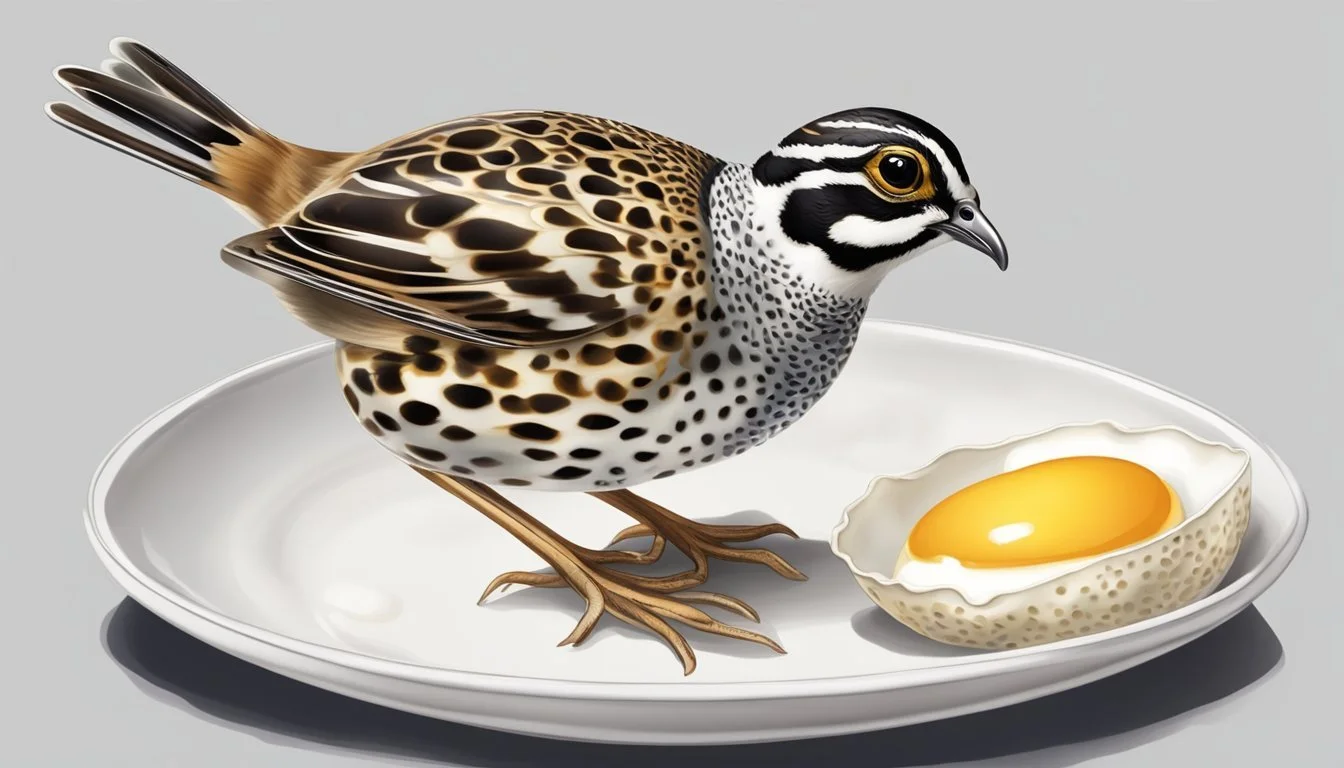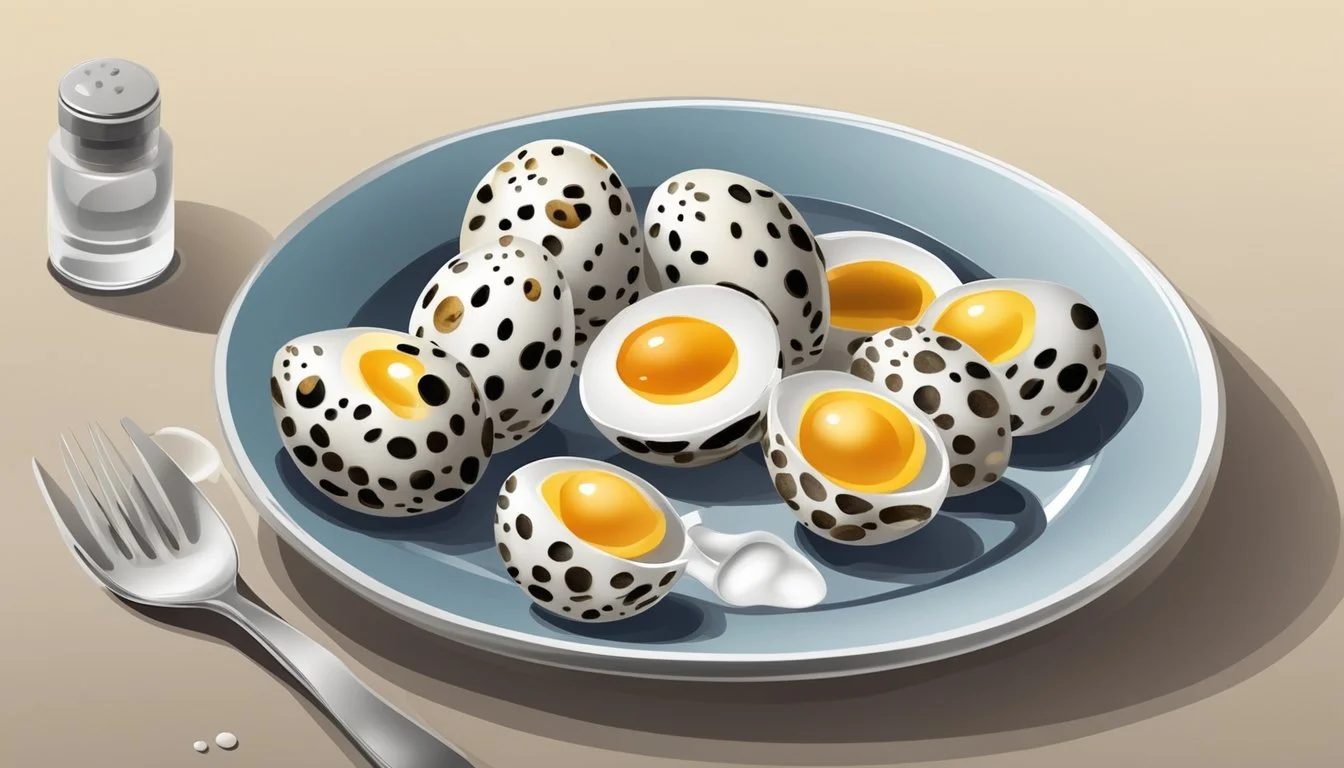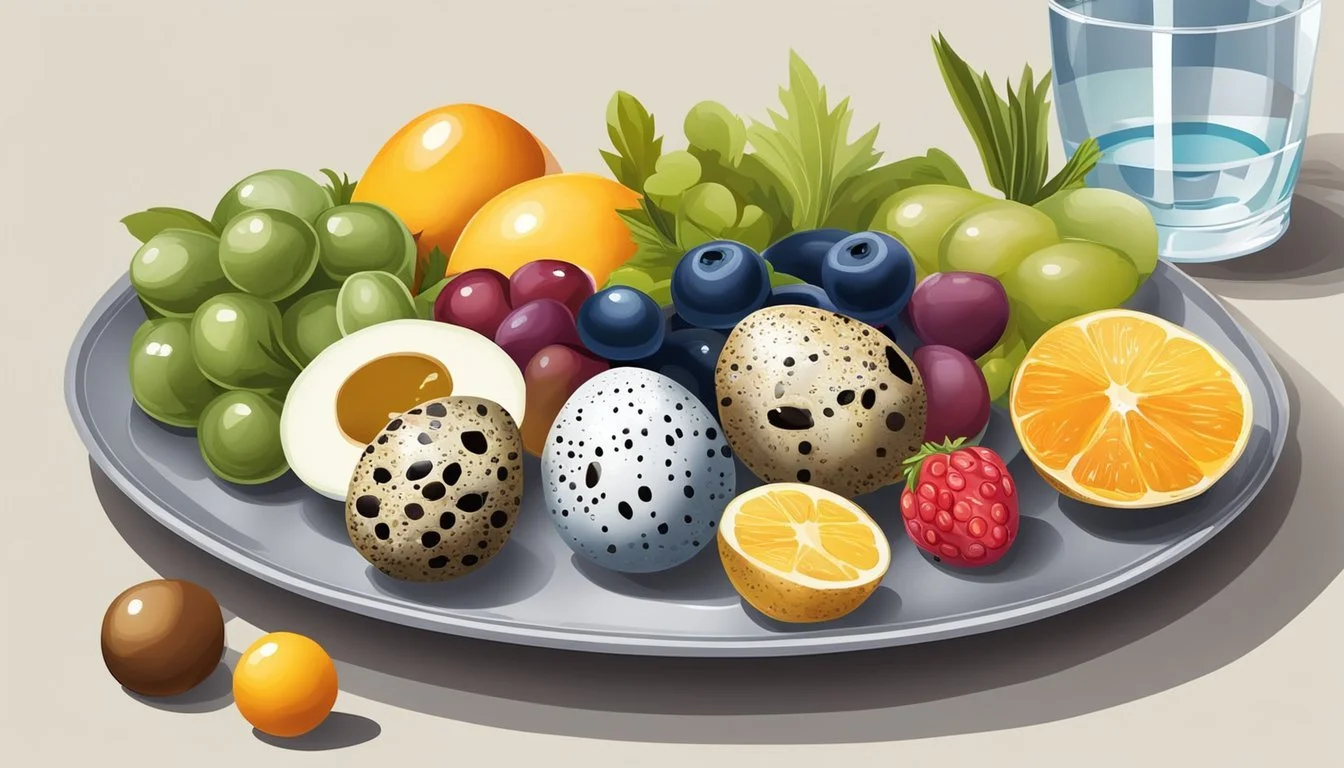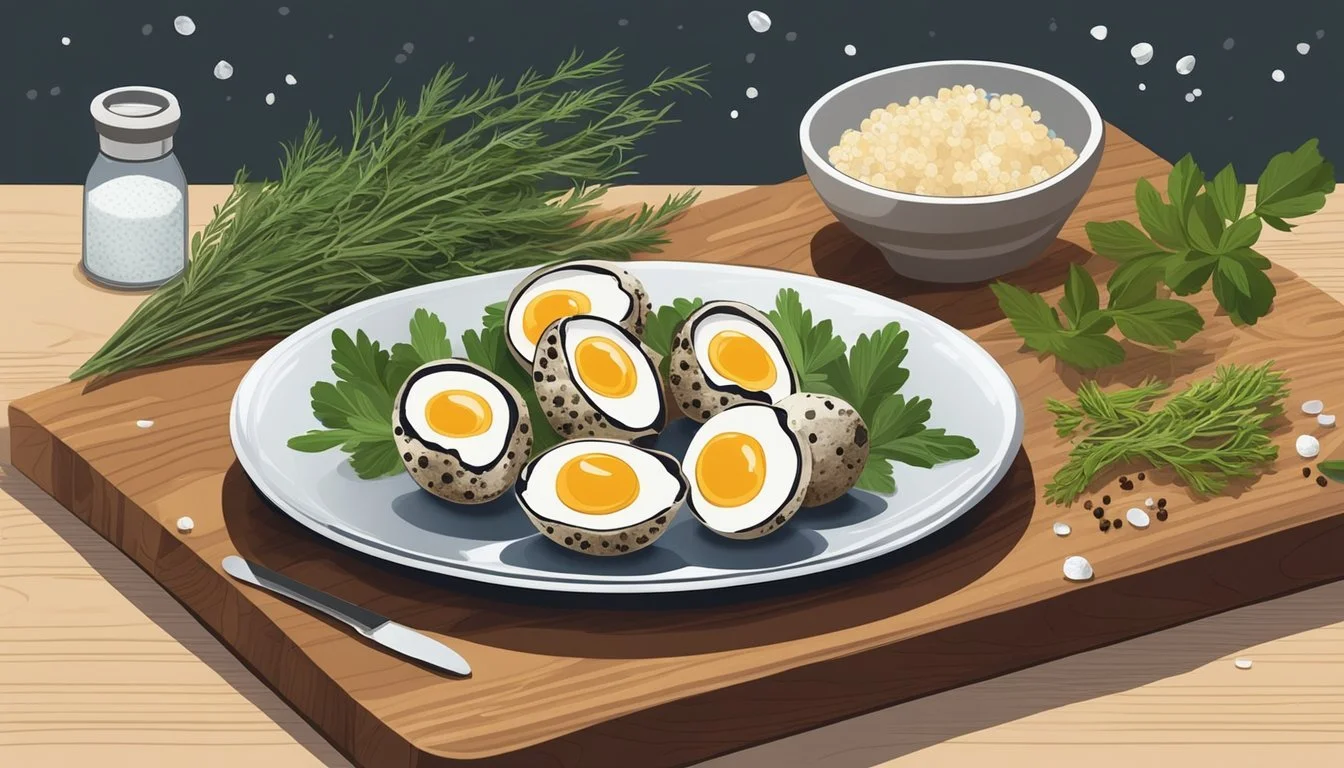How Do You Eat Quail Eggs?
Simple Ways to Enjoy This Delicacy
Quail (What wine goes well with quail?) eggs, known for their distinctive appearance and size, are often hailed as a culinary delicacy. Slightly smaller than chicken eggs, they are about one-third the size and boast cream-colored shells dappled with brown spots. Their taste is quite similar to that of chicken eggs, although some gourmets suggest they have a slightly richer flavor due to their higher yolk-to-white ratio. This ratio also makes them especially coveted for dishes where the richness of the yolk is prized.
When it comes to consumption, quail eggs offer versatility much like their chicken counterparts. They can be incorporated into a variety of recipes and are suitable for boiling, pickling, or frying. Cooking these eggs requires a gentler approach, as their diminutive size means they cook quicker. A properly boiled quail egg can be achieved in two to three minutes depending on the desired firmness of the yolk, with a shorter cooking time yielding a runny yolk and a slightly longer period resulting in a firmer one.
Their nutritional profile further adds to their allure, as they contain vital vitamins and minerals, although one should be conscious of dietary preferences and allergies just as with consumption of any egg product. Whether served as a garnish, featured in an appetizer, or used as a main ingredient, quail eggs present a unique opportunity to enhance meals with their delicate and desirable characteristics.
Quail Eggs 101
Quail eggs are gaining popularity as a gourmet ingredient and a nutritional powerhouse. This section provides a concise guide to understanding the basics of quail eggs, from identification to nutrition, and how they compare to chicken eggs.
Identifying Quail Eggs
Quail eggs are small and often exhibit a speckled pattern on their shells that varies from light brown to dark brown. They are roughly one-third the size of a chicken egg, making them distinctive both in appearance and size.
Nutritional Profile
Despite their small size, quail eggs are rich in nutrients. They contain a good balance of protein and are a source of vitamin B12 and iron. A single quail egg offers:
Protein: Approximately 1 gram
Vitamin B12: Contributes to healthy brain function
Iron: Essential for blood production
While they are high in cholesterol, they also provide a range of vitamins and minerals beneficial to health.
Quail Eggs Vs Chicken Eggs
When comparing quail eggs to chicken eggs, there are notable differences:
Size: Quail eggs are smaller; typically, 3-4 quail eggs equate to one chicken egg.
Nutrient density: Quail eggs have a higher yolk-to-white ratio, often resulting in a nutrient-dense yolk.
Flavor: Some people find the flavor of quail eggs to be slightly richer than chicken eggs.
Purchasing Quail Eggs
Quail eggs can usually be found at specialty food stores, farmers' markets, or through online retailers. When buying quail eggs, one should ensure they are fresh and come from a reliable source. Prices may vary depending on the source and organic status.
Preparing Quail Eggs
Quail eggs are a nutritious and versatile ingredient, but they require careful handling and specific preparation methods to ensure the best culinary experience.
Handling and Storage
When handling quail eggs, it is important to remember that they have a delicate shell compared to chicken eggs. They should be stored in the refrigerator and can last up to four weeks. One should always check for any cracks or breaks in the shell before using quail eggs, as these can harbor bacteria.
Washing and Cracking Techniques
Prior to cooking, quail eggs need to be washed gently under running water to remove any debris. When cracking quail eggs, a sharp knife or a special quail egg cutter can be used to tap the top of the egg. Then, the top of the shell is removed carefully to prevent yolk breakage. Here are detailed techniques:
Washing:
Run cold water.
Gently roll the quail egg between fingers to ensure all surfaces are cleaned.
Cracking:
Tap the equator of the egg with a knife or use a quail egg scissors.
Lift the top of the shell slightly and pour the contents into a bowl.
It is advisable to crack each egg separately to avoid shell fragments mixing with the yolks and whites.
Cooking Quail Eggs
Quail eggs are a delicate and versatile ingredient that require specific methods for cooking. Whether boiling, frying, poaching, scrambling, or baking, careful handling and timing are key to achieving the desired texture and flavor.
Boiling Quail Eggs
To boil quail eggs, one should place them in a saucepan and add cold water to cover them by 1 inch. Bringing the water to a boil and then reducing it to a simmer allows for precise control. For soft-boiled eggs, a cooking time of 2 minutes is sufficient, while hard-boiled eggs need about 3 to 4 minutes. Following cooking, transferring the eggs to an ice bath will stop the cooking process and make peeling easier.
Frying Quail Eggs
When frying, it's important to heat a pan with a light coating of oil over medium heat. Quail eggs can be cracked carefully into the pan, ensuring the yolk remains intact. They cook quickly and usually require just 1 minute until the whites are set but the yolks are still runny.
Poaching Quail Eggs
To poach quail eggs, begin by bringing water in a pan to a gentle simmer. Eggs should be cracked into a small dish first and then gently slid into the water. For perfectly poached quail eggs, a cooking time of 2 to 2 and a half minutes is ideal, ensuring a runny yolk and set white.
Scrambling Quail Eggs
For scrambled quail eggs, they should be beaten in a bowl before being poured into a heated, lightly oiled pan. Gentle stirring over medium-low heat will yield soft and creamy scrambled eggs. The process usually takes around 3 minutes.
Baking Quail Eggs
Baking quail eggs typically involves preheating the oven to a moderate temperature and placing the whole eggs in a muffin tray or cracking them into small dishes. They should be baked until the whites are set but the yolks are still soft, which tends to take around 12 to 15 minutes depending on the oven and desired doneness.
Serving Quail Eggs
Quail eggs are a versatile and delicate ingredient, prized for their rich flavor and easy adaptability into various dishes. They can be served in multiple ways, providing a unique twist on traditional egg preparations.
Hard-Boiled Quail Eggs as Garnish
Hard-boiled quail eggs are a common garnish that provide both visual appeal and a burst of flavor to a dish. The typical method involves boiling them for about 2 to 3 minutes for a firm white and a yolk with a slightly runny consistency. Often, they are chilled in an ice bath after boiling to make peeling easier. A pinch of salt can enhance their taste. They pair exceptionally well with smoked salmon for a luxurious breakfast option and can be a delicate addition to tapas or as part of a salad.
Incorporation in Various Cuisines
Incorporating quail eggs into various cuisines adds sophistication due to their unique texture and presentation. Japanese cuisine frequently uses quail eggs due to their petite size and rich yolk, placing them atop sushi or mixed into bento boxes. Other ingredients like vinegar, specifically white vinegar, may be used in the poaching process of quail eggs to assist in the firming of the egg white. They're a delightful option for sunny side up preparations, giving an elegant touch to a simple dish.
Quail Eggs in Street Food
Quail eggs find their place in street food around the world as well. They are often deep-fried or grilled on skewers, offering a convenient and tasty snack. Their small size makes them ideal for quick cooking and easy consumption on the go. Street food vendors might serve them with a variety of seasonings, from simple salt and pepper to exotic spice blends, showcasing the egg's ability to adapt to different palates and flavors.
Savoring the Taste
Quail eggs are renowned for their distinctive taste and are often considered a delicacy. They possess a richer flavor and a creamier texture when compared to chicken eggs. Here, we explore how to best enjoy their unique taste through thoughtful flavor pairings and the use of specific seasonings and spices.
Flavor Pairings
Quail eggs' bold taste pairs well with a variety of ingredients. Their rich flavor complements subtle and earthy notes, making them an excellent addition to salads or as a topping on canapés. Here are specific pairings that elevate the taste of quail eggs:
Potatoes: Their neutral taste serves as a canvas for the pronounced flavors of the quail eggs.
Bread: A slice of crusty bread can soak up the runny yolk, blending textures and tastes effectively.
Seafood: The slight sweetness of seafood like smoked salmon enhances the egg's flavor.
Seasoning and Spices
The right seasoning brings out the natural flavors of quail eggs without overwhelming them. A pinch of salt is essential for enhancing taste, while spices must be used judiciously to complement, not mask, the delicate flavor of the eggs. Here are recommended seasonings and their appropriate measures:
Seasoning Quantity Note Salt A pinch Draws out the natural flavors Paprika A light sprinkle Adds a sweet and smoky nuance Cloves One clove (in cooking) Imparts a warm and aromatic depth Bay leaves One leaf (in cooking) Provides a subtle and fragrant background
When preparing quail eggs, it is crucial to use these seasonings with care to avoid overpowering the egg's own taste and maintaining its delightful texture.
After Cooking Care
Once quail eggs have been cooked to the desired level, proper handling ensures the retention of their delicate texture and flavor. The steps for peeling and storage are crucial to maintain the quality of the eggs for consumption or use in various recipes.
Peeling Techniques
Quail eggs, with their smaller size and more delicate shells, require careful handling when peeling. A common technique involves:
Cooling in Ice Bath: Immediately after cooking, transfer the quail eggs to an ice bath. This stops the cooking process and creates a temperature contrast that helps separate the shell from the egg white.
Cracking the Shell: Gently tap the quail egg on a hard surface to create small cracks around its midsection.
Peeling: Roll the egg lightly between your fingers or on a surface to further loosen the shell, then start peeling from the bottom, where there is often an air pocket. The membrane should come off with the shell, leaving a clean egg.
Storage After Cooking
Proper storage extends the shelf life of cooked quail eggs and preserves their quality:
Refrigeration: Store the peeled or unpeeled quail eggs in an airtight container in the refrigerator.
Shelf Life: Cooked quail eggs can last up to one week when refrigerated properly. It is not recommended to freeze cooked quail eggs, as their texture can be compromised.
Health and Nutrition
Quail eggs possess specific nutritional benefits and should be considered in the context of dietary needs and restrictions. They offer a unique combination of vitamins and minerals, which can contribute to a balanced diet when consumed in moderation.
Nutritional Benefits
Quail eggs are a nutrient-dense food, with a single small egg weighing approximately 9 grams and offering:
Calories: About 14 per egg
Protein: Roughly 1 gram, which is essential for muscle repair and growth
Fat: Also around 1 gram, including a mix of saturated and unsaturated fats
Cholesterol: High in comparison to chicken eggs, but can be part of a healthy diet if consumed wisely
Vitamin B12 and Riboflavin (Vitamin B2): Both support energy metabolism and are present in quail eggs
Choline: Vital for brain health and found in ample quantity in quail eggs
Folate: Important for DNA synthesis and repair, and is found in these eggs
Vitamin A: Important for skin, vision, and immune health
The unique composition of quail eggs makes them beneficial for a range of health aspects, potentially supporting metabolism, brain function, and overall nutritional balance.
Dietary Considerations
When incorporating quail eggs into a diet, several factors need consideration:
Allergies: Some individuals may have allergies to eggs, including quail eggs.
Cholesterol Levels: While quail eggs contain beneficial nutrients, they also have a significant amount of cholesterol which might be a concern for those with certain health conditions.
Portion Size: Due to their smaller size, more quail eggs may be consumed to equal the serving of chicken eggs, which could lead to an increased intake of cholesterol and calories.
Balance: They should be consumed as part of a varied and balanced diet to maximize the intake of their rich nutrients while minimizing potential risks from overconsumption of cholesterol.
Quail eggs provide a rich tapestry of nutrients beneficial to health but should be eaten in moderation within the context of an individual's dietary needs.
Culinary Inspirations
Quail eggs, with their delicate size and rich flavor, offer diverse culinary uses ranging from luxurious fine dining applications to creative home cooking endeavors.
Quail Eggs in Fine Dining
Chefs in high-end restaurants often use quail eggs to add a touch of luxury to their dishes. Due to their petite size and appealing aesthetics, these eggs are perfect for delicate appetizers or as garnishes. In fine dining, quail eggs might feature as a sophisticated component in starters such as quail egg canapés or atop a carefully constructed tartare. They are commonly soft-boiled to retain a runny yolk, presenting a rich and creamy texture that complements the crispness of accompanying elements.
Additionally, deviled quail eggs are a common yet elegant offering, where the delicate whites are filled with a flavorful yolk mixture, often spiked with refined ingredients such as truffle oil or caviar. Another example is a quail egg placed inside a miniature bird's nest of fried potatoes or leeks, creating an intricate visual and textural contrast on the plate.
Quail Eggs in Home Cooking
At home, quail eggs provide a versatile ingredient that can elevate everyday cooking. They can be boiled and used in various ways—sliced into a salad for added protein, pickled as a tangy snack, or simply seasoned with a sprinkle of salt and paprika to be eaten on their own.
A popular home preparation is pickled quail eggs, which involves boiling and then immersing them in a mixture of vinegar, salt, spices, and herbs. This results in a snack that's both delicious and long-lasting. Baked quail eggs can enrich a dish with their flavor, such as when baked in small pastry cups or in hollowed vegetables like cherry tomatoes.
For a hearty breakfast, one might crack quail eggs over a hot skillet and prepare mini fried eggs, or drop them into simmering soups for a quick poach. The small size of quail eggs makes them ideal for single servings, and they cook much faster than chicken eggs, making them a convenient choice for quick meals.
Conclusion
Quail eggs offer a novel addition to various culinary practices, with their size, taste, and nutrient profile distinguishing them from more common chicken eggs. When preparing quail eggs, consumers should be mindful of their delicate nature due to smaller size and distinctive shell appearance.
Size Comparison: Typically, one would require about three to four quail eggs to equate to the volume of a single chicken egg.
Taste Profile: Quail eggs boast a flavor similar to chicken eggs, making them a versatile ingredient in a range of recipes.
Cooking Time:
For a runny yolk: Cook for 2 minutes after water boils.
For a solid yolk: Extend cooking time to 3 minutes.
The cooking method for quail eggs parallels that of chicken eggs, with the need for slight adjustments due to size. One should gently place them into boiling water, and following a precise timer, transfer them to an ice bath to halt the cooking process. The result is a delicately cooked quail egg that can be peeled and used in various dishes, whether as a garnish or a key ingredient.
The nutrition of quail eggs includes beneficial fatty acids, contributing positively to heart health. Apart from their monounsaturated fat content, the egg whites from quail eggs are also rich in protein, though they have a higher yolk to white ratio compared to chicken eggs.
With a suitable approach to preparation and an understanding of their unique attributes, quail eggs can be a healthy and delightful addition to one's diet. They can easily integrate into meals that traditionally use chicken eggs, offering a nutritiously dense alternative.







